Best Exercises for Rottweilers

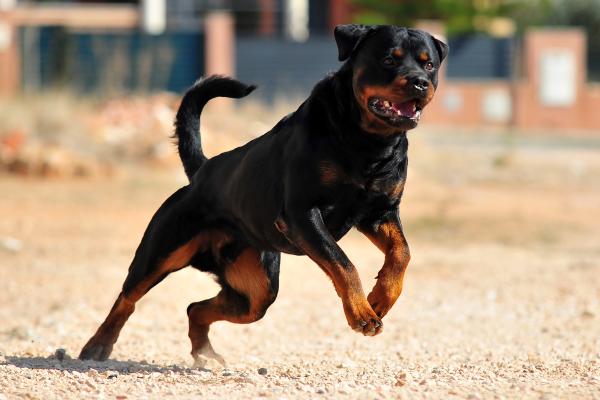
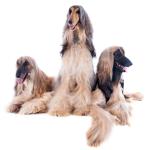
See files for Dogs
Rottweilers are powerful, intelligent dogs, and their exercise needs change dramatically as they grow. From rambunctious puppies to strong adults and then dignified seniors, each stage of life requires a different approach to exercise to ensure healthy development, maintain fitness, and protect their joints.While these dogs are naturally athletic and capable of impressive feats, they're also prone to joint problems like hip dysplasia.
The following AnimalWised article explores how to exercise your Rottweiler in every stage of their lives.
Exercise and physical activity in Rottweilers
Rottweilers are powerful dogs with a natural athleticism that needs proper channeling through regular exercise. While these dogs are prone to certain joint conditions like hip dysplasia, this doesn't mean they should lead a sedentary life. In fact, appropriate exercise is crucial for their physical and mental well-being.
When it comes to joint health, early screening is essential. Having your Rottweiler's hips and elbows evaluated can provide valuable information into how much activity they can handle. Each dog is unique, and what works for one might not be suitable for another.
The best approach to exercising your Rottweiler focuses on controlled, moderate activities. Swimming is particularly beneficial as it provides excellent cardiovascular exercise while taking pressure off the joints. Regular leashed walks allow you to control the pace and duration, making them another ideal choice. Structured play and moderate training activities, including basic obedience work and carefully planned agility exercises, can also be part of a well-rounded routine.
When developing an exercise program, remember that gradual progression is key. Start slowly and build up intensity over time, always watching for signs of fatigue or discomfort. This is especially important during your Rottweiler's growth period, which continues until about two years of age. Consistency in exercise is far more beneficial than occasional intense sessions that can strain joints and muscles.
Supporting your Rottweiler's joint health goes beyond exercise. Maintaining a healthy weight is crucial, as extra pounds put unnecessary stress on joints. Quality nutrition plays a vital role, and some dogs may benefit from joint supplements, though these should always be discussed with your veterinarian first.
Exercise needs will change throughout your Rottweiler's life. Puppies require different activities than adult dogs, and senior Rottweilers may need modified routines. Weather conditions should also influence your exercise choices, as these dogs can be sensitive to extreme temperatures, especially heat.
Ever wondered why some Rottweilers seem built for different types of activities? The answer might lie in their lineage. Explore the fascinating distinctions between American and German Rottweilers in our expert guide.
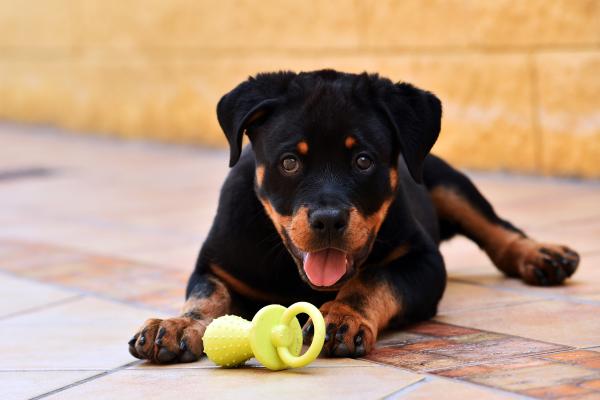
Exercise for Your Rottweiler Puppy
Starting your Rottweiler puppy on the right exercise path is crucial for their long-term health and development. It is essential to remember that their growing bodies need careful consideration when it comes to physical activity.
For young Rottweiler puppies, gentle walks are perfect to start with. Aim for two daily walks of about 20-30 minutes each. These walks should be more about exploration and learning than physical exertion. Let your puppy set the pace, and don't worry if they want to stop and investigate their surroundings because this is all part of their development.
As your Rottweiler puppy grows, you can gradually increase their exercise duration and intensity. However, avoid high-impact activities like jumping, long runs, or stairs until they're fully grown (around 18-24 months). Their joints are still developing during this time, and too much stress can lead to problems later in life.
Young Rottweilers need significant rest periods throughout the day. Sleep and rest are crucial for their growth and development. Don't be concerned if your energetic puppy suddenly needs a nap, this is completely normal and necessary. Growing puppies can sleep up to 18-20 hours a day, and this rest time is as important as their exercise periods.
Pay attention to your puppy's signals during exercise. If they seem tired, are lagging behind, or lie down during walks, it's time to head home. Overexertion in puppies can lead to exhaustion and potential joint issues, so it's better to err on the side of caution and keep sessions shorter rather than longer.
Finally, remember that mental stimulation is just as important as physical exercise for a growing Rottweiler. Incorporate training sessions, puzzle toys, and socialization experiences into their daily routine. These activities help tire them out while building crucial life skills and strengthening your bond.
Curious about how exercise influences your Rottweiler's behavior? Explore our in-depth look at the real personality behind these powerful dogs.
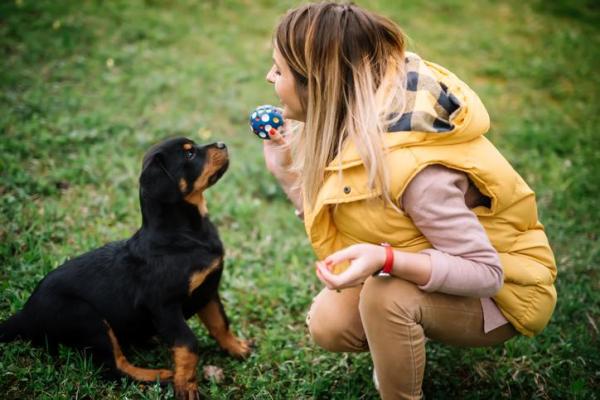
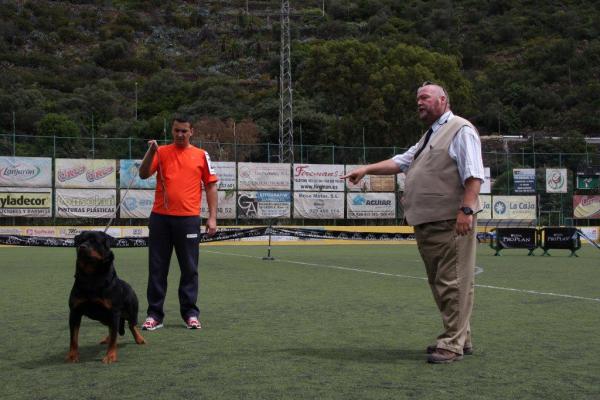
4 exercises for adult rottweiler dogs
A well-exercised Rottweiler is a happy and balanced companion. Once your Rottweiler reaches adulthood and has mastered basic obedience, you can introduce a variety of exercises to keep them physically and mentally stimulated.
Remember that every Rottweiler is different, so adjust these activities based on your dog's fitness level and enthusiasm. Watch for signs of fatigue during exercise, and always consult your veterinarian before starting new exercise routines.
Here are four proven exercises that will help maintain your Rottweiler's health and strengthen your bond:
1. Daily walking and jogging
Daily walks form the foundation of a Rottweiler's exercise routine. For adult Rottweilers, aim for 30-40 minute sessions, two to three times daily. These walks can incorporate varied terrain and intensity levels, including gentle jogging on appropriate surfaces.
Mix up your routes to include hills and different neighborhoods, keeping your dog mentally engaged while building physical stamina. Remember that consistency is more important than intensity.
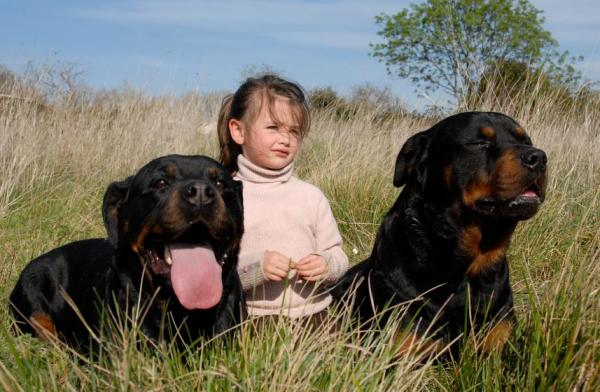
2. Interactive ball play
Playing fetch with your Rottweiler provides excellent exercise while reinforcing obedience training.
Start each session by having your dog sit and wait for permission to chase the ball. This mental discipline combined with physical activity creates a perfect balance.
Choose durable, appropriately-sized balls specifically designed for large breeds. Keep sessions moderate in length to prevent overexertion, and always end the game while your dog is still engaged but not overly excited.
3. Agility training
While Rottweilers aren't typically associated with agility sports, many enjoy and benefit from modified agility exercises. Start with basic obstacles like tunnels and low jumps, gradually introducing more challenging elements as your dog builds confidence and strength.
The combination of physical exercise and mental focus makes agility an excellent activity for these intelligent dogs. Always adjust the height and difficulty of obstacles to suit your Rottweiler's build and ability level.
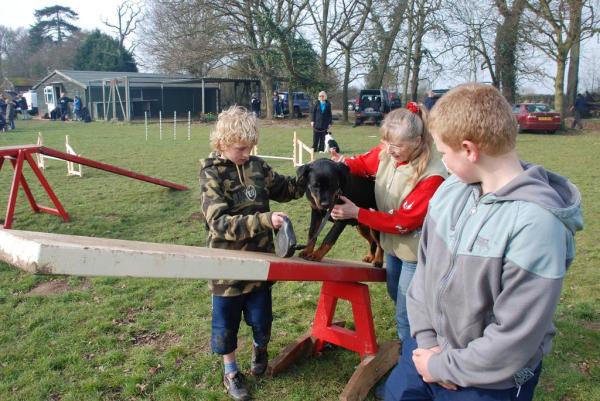
4. Controlled tug games
Contrary to common misconceptions, tug games can be beneficial for Rottweilers when properly structured. These games build strength and provide an outlet for natural behaviors while reinforcing training.
The key is maintaining control throughout the game:
- Use appropriate tug toys designed for large breeds.
- Establish clear rules, the game starts and stops on your command.
- Teach and reinforce the "drop it" command.
- Allow your dog to win sometimes, but maintain overall control.
- Stop immediately if your dog shows any aggressive behavior.
- Always end the game on a positive note.
Exercises for elderly rottweiler dogs
As Rottweilers enter their senior years around age 7, their exercise needs change significantly.
While they still need regular activity to maintain health and mobility, the focus shifts to gentler, low-impact exercises that protect their aging joints and muscles. Here's how to keep your senior Rottweiler active and healthy.
Rottweilers naturally experience decreased metabolic activity and gradual muscle loss. This makes it crucial to adjust both their diet and exercise routine to match their changing needs.
Here are some activities for elderly Rottweilers that we recommend:
1. Swimming
Swimming is a great activity for senior Rottweilers. It provides excellent, joint-friendly cardiovascular exercise, helps maintain muscle mass without putting stress on aging joints, supports healthy weight management, and improves mobility and flexibility.
When introducing your Rottweiler to swimming, always supervise them closely and never force them into the water if they're hesitant. Using appropriate safety equipment, such as a dog life vest, is crucial, especially when starting out.
It's also best to choose calm, controlled environments like supervised dog pools rather than unpredictable open water.
2. Gentle walks
For gentle walking with your senior Rottweiler, think back to their puppyhood days.
Shorter, more frequent walks are key, aiming for 15-20 minutes two or three times a day. Whenever possible, choose softer surfaces for your walks to be easier on their joints.
Don't forget to let them enjoy their walks, so give them plenty of time to sniff and explore, and be sure to include rest breaks as needed. Always keep a close eye on your dog for any signs of fatigue and adjust the walk accordingly.

3. Doga
Doga, or dog yoga, is a wonderful way to combine gentle stretching with relaxation, benefiting both your senior Rottweiler's body and mind. It helps improve flexibility, maintain muscle tone, reduce anxiety, and strengthens the special bond you share with your dog.
Exercise needs vary among strong breeds. Discover how Rottweilers compare to their equally powerful cousins in our detailed breed comparison guide.
You can easily practice doga at home in a quiet, comfortable space. The most important thing is to always follow your dog's lead and never force them into any poses or movements that cause them discomfort.
If you want to read similar articles to Best Exercises for Rottweilers, we recommend you visit our Sports category.











